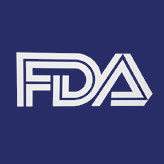FDA Panel Backs Trastuzumab Biosimilar
The FDA Oncologic Drugs Advisory Committee has unanimously voted to recommend approval of the trastuzumab biosimilar MYL-1401O for the treatment of HER2-positive breast cancer.
The committee voted 16-0 in support of eligible trastuzumab indications

The US Food and Drug Administration’s (FDA) Oncologic Drugs Advisory Committee (ODAC) has voted to recommend approval of the proposed trastuzumab biosimilar MYL-1401O (manufactured by Mylan/Biocon) for the treatment of HER2-positive breast cancer. The committee voted 16-0 in support of eligible trastuzumab (Herceptin) indications, which include the treatment of HER2-positive breast cancer in the metastatic and adjuvant settings.
Patent periods for some targeted biologics like trastuzumab are expiring soon, and biosimilar agents like MYL-1401O that are not patent protected may offer more affordable treatment options.
“We welcome ODAC’s endorsement of our biosimilar trastuzumab,” said Arun Chandavarkar, BTech, MS, PhD, the CEO and Joint Managing Director of Biocon, in a press release. “We now look forward to engaging with the FDA to seek final approval in order to expand access to a high-quality, affordable option for treating HER2-positive breast cancers.”
Data presented to ODAC included results from analytical, nonclinical, and clinical studies demonstrating that MYL-1401O is highly similar to trastuzumab, according to the release.
The recommendation was in part based on data from the phase III HERITAGE study, which were presented last year at the American Society of Clinical Oncology (ASCO) Annual Meeting.
The trial included 500 metastatic HER2-positive breast cancer patients randomly assigned to receive taxane chemotherapy with either trastuzumab or MYL-1401O for at least 8 cycles, followed by trastuzumab or MYL-1401O alone until disease progression.
Of these study participants, 458 were evaluable at 24 weeks for objective response rates, which were almost identical for patients who received MYL-1401O (n = 230) compared with those who received trastuzumab (n = 228; 69.6% vs 64%, respectively).
Median progression-free survival at 48 weeks was identical, at 11.1 months (95% CI, 8.8–11.2) in the MYL-1401O arm vs 11.1 months (95% CI, 8.6–11.2) in the trastuzumab arm. Overall survival data have not been reached.
Treatment-emergent adverse events (AEs) across the two study arms were comparable, as were grade 3 or higher AEs (65.2% in each arm). Treatment-related AEs were higher with MYL-1401O (41.7% vs 35.8%), but AEs that led to discontinuation were similar (9 patients in each arm).
Serious AEs were primarily hematologic (most commonly and most seriously, neutropenia), and were reported in 39.3% of patients receiving MYL-1401O vs 37% of patients receiving trastuzumab. There were six incidents of cardiac failure in the MYL-1401O arm vs two in the trastuzumab arm, and there were six fatal events with MYL-1401O vs four with trastuzumab.
The FDA uses ODAC and other panels and advisory committees for various reasons, including product approvals. Though not required to do so, the FDA often follows ODAC recommendations. With its recommendation, ODAC determined that no clinically meaningful differences exist in terms of safety, purity, and potency between the proposed biosimilar MYL-1401O and trastuzumab.
Other trastuzumab biosimilars in HER2-positive breast cancer are also under investigation.
Trastuzumab is also approved in combination with 5-fluorouracil or cisplatin/capecitabine for the treatment of metastatic gastric or gastroesophageal junction adenocarcinoma in patients who overexpress HER2 and have not received prior treatment for their metastatic disease-this indication is protected by orphan drug exclusivity that expires later this year.